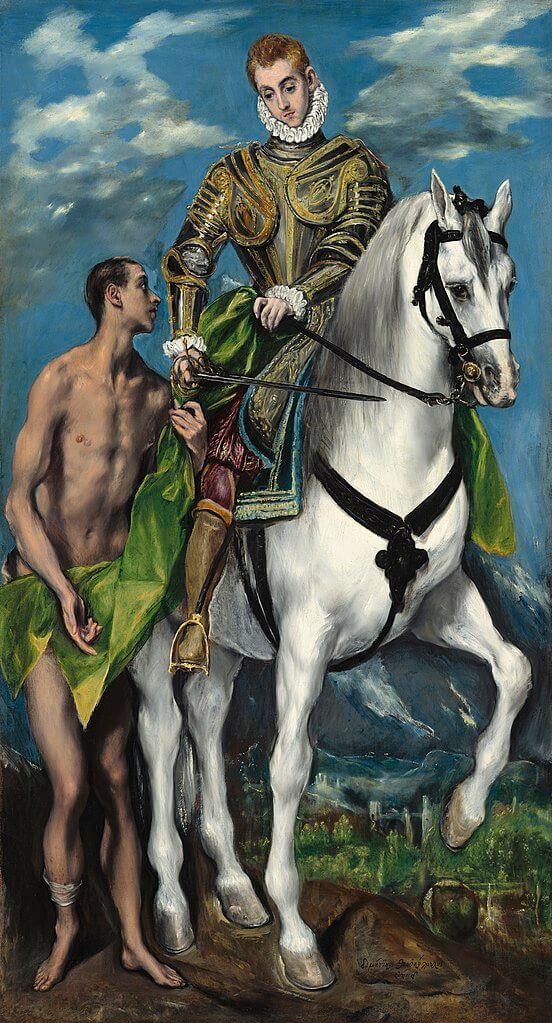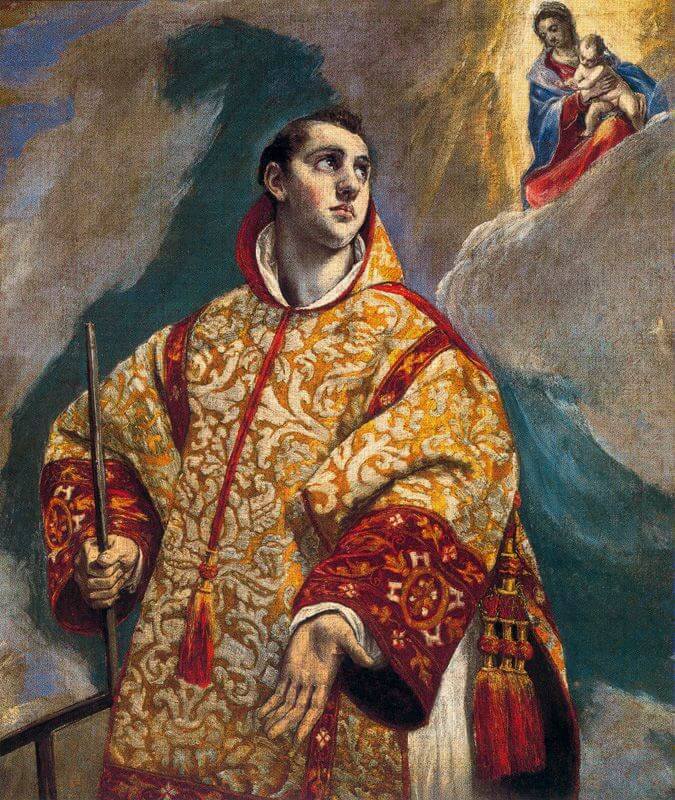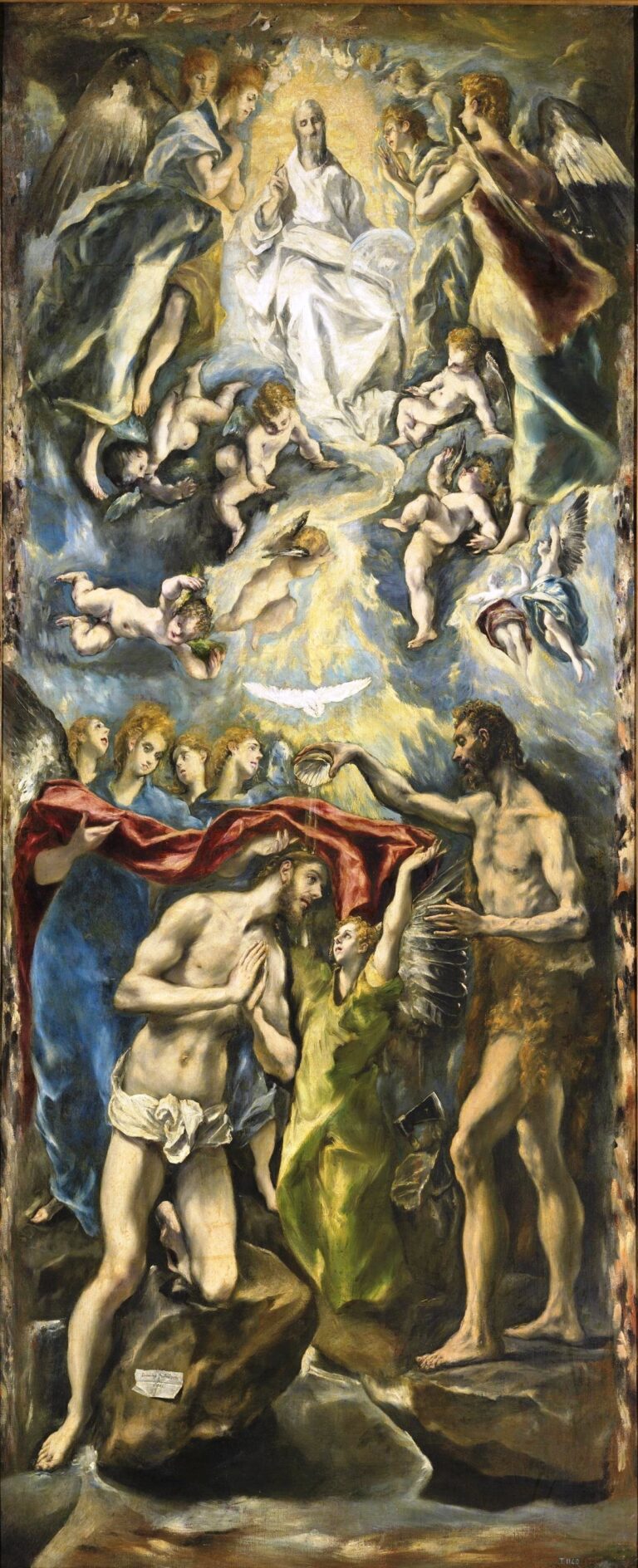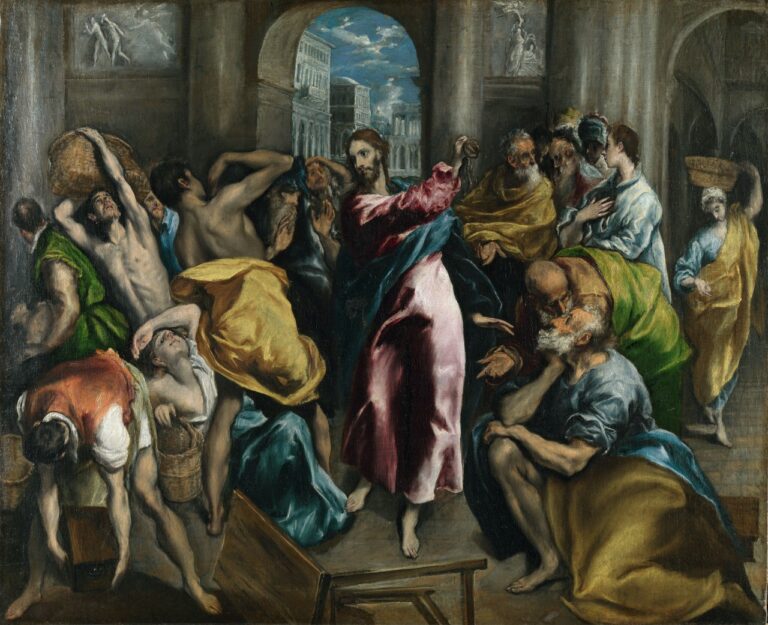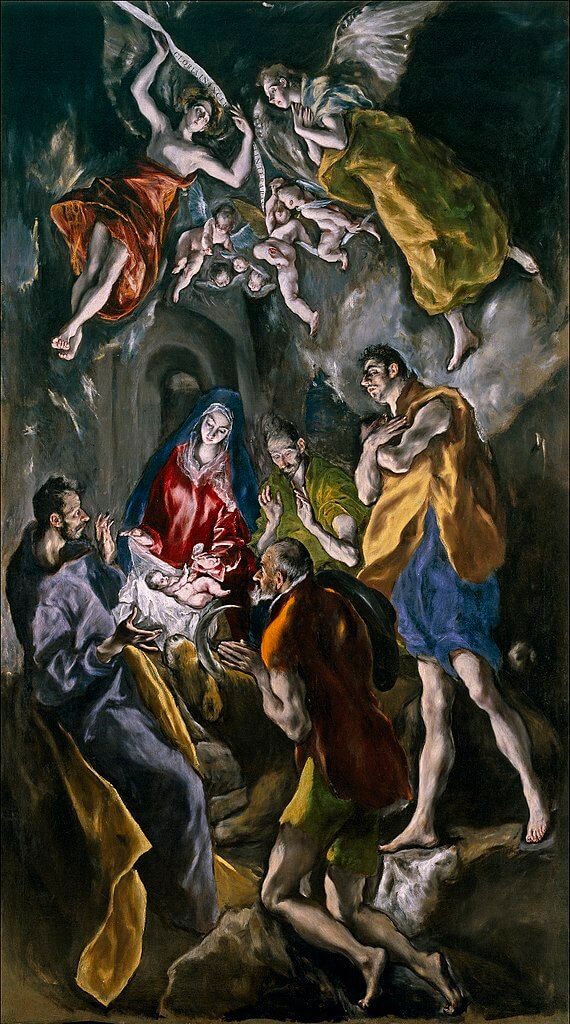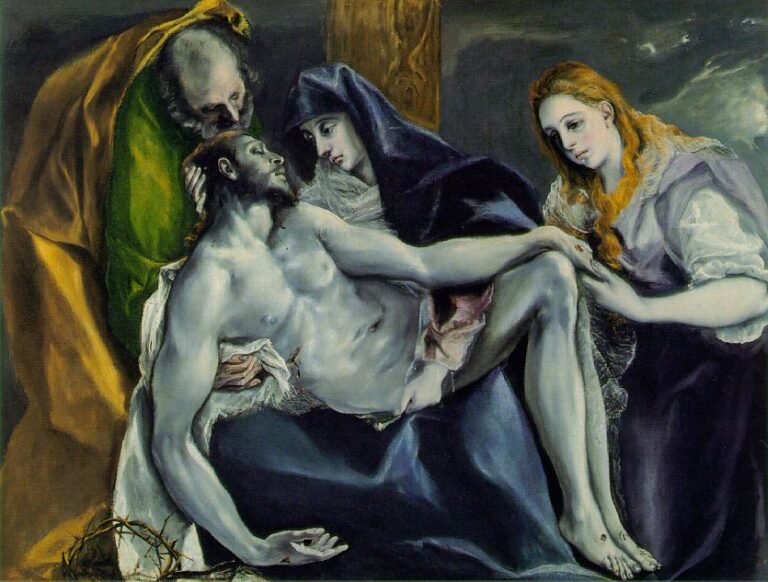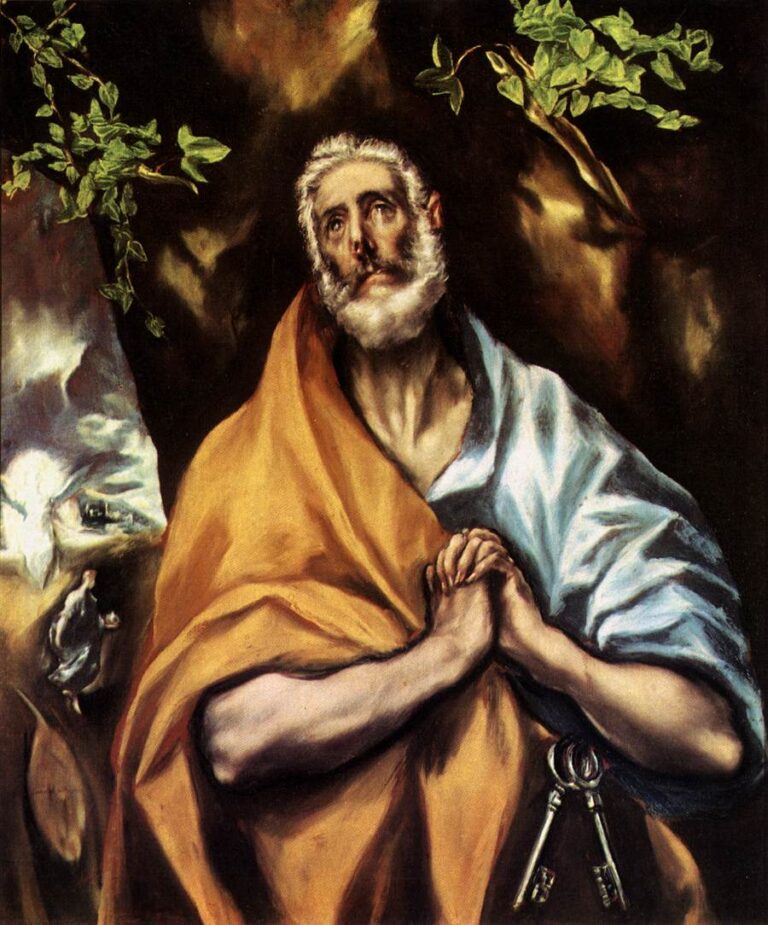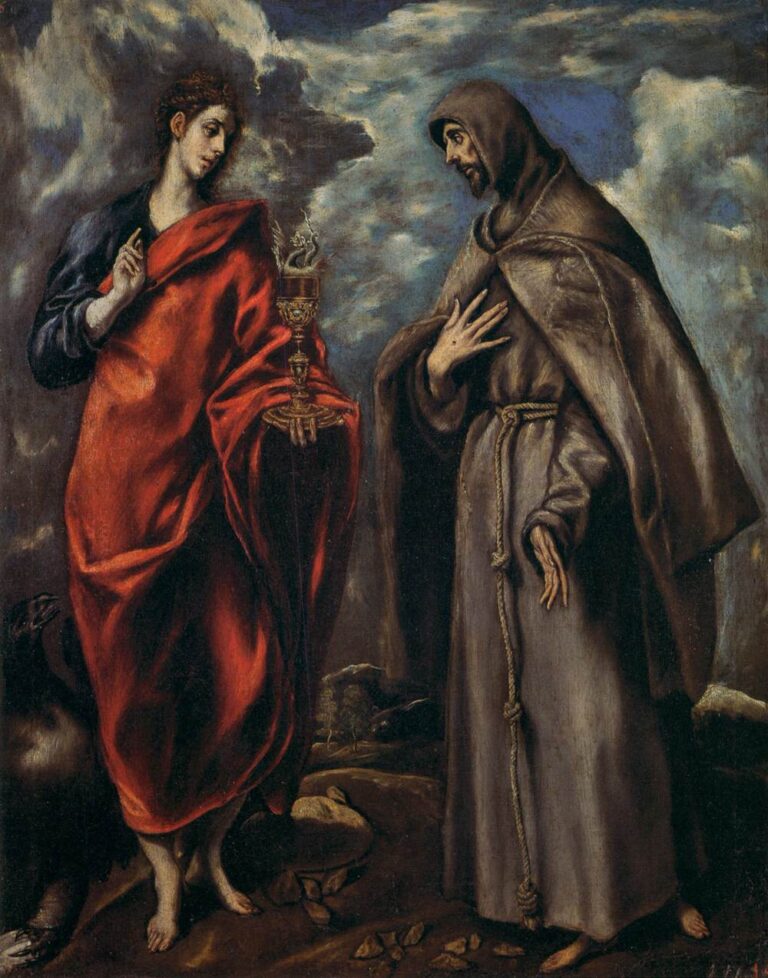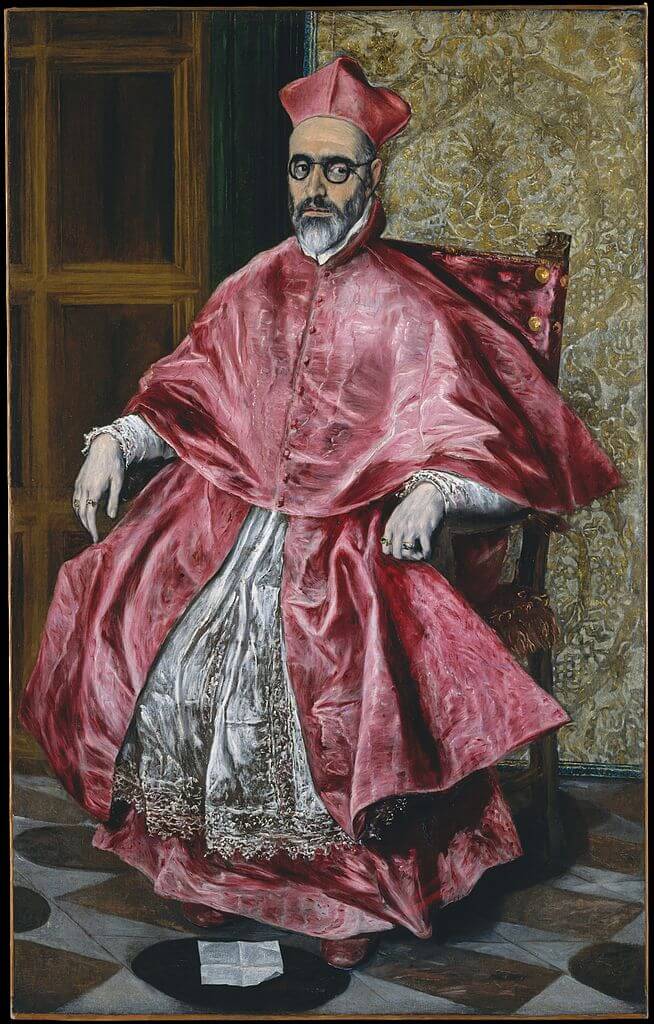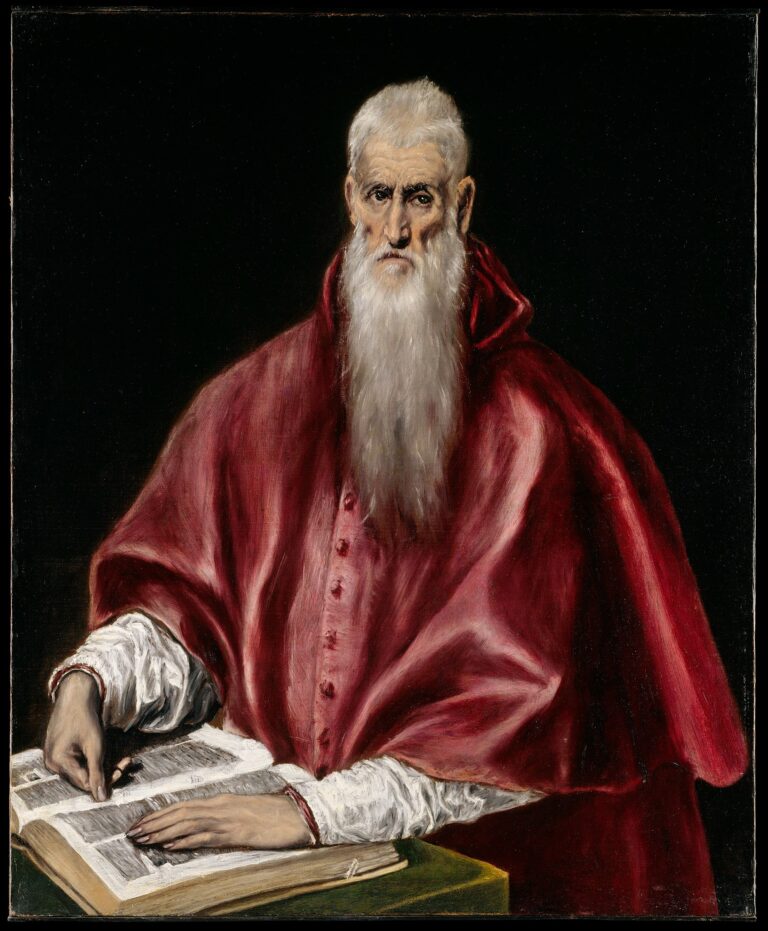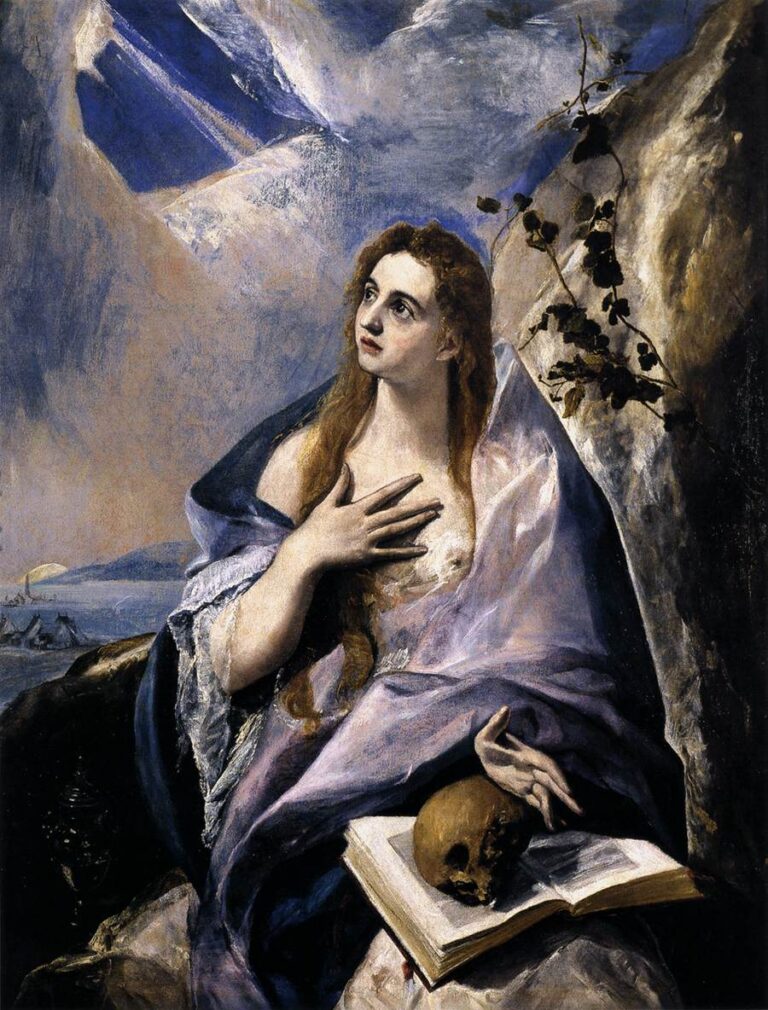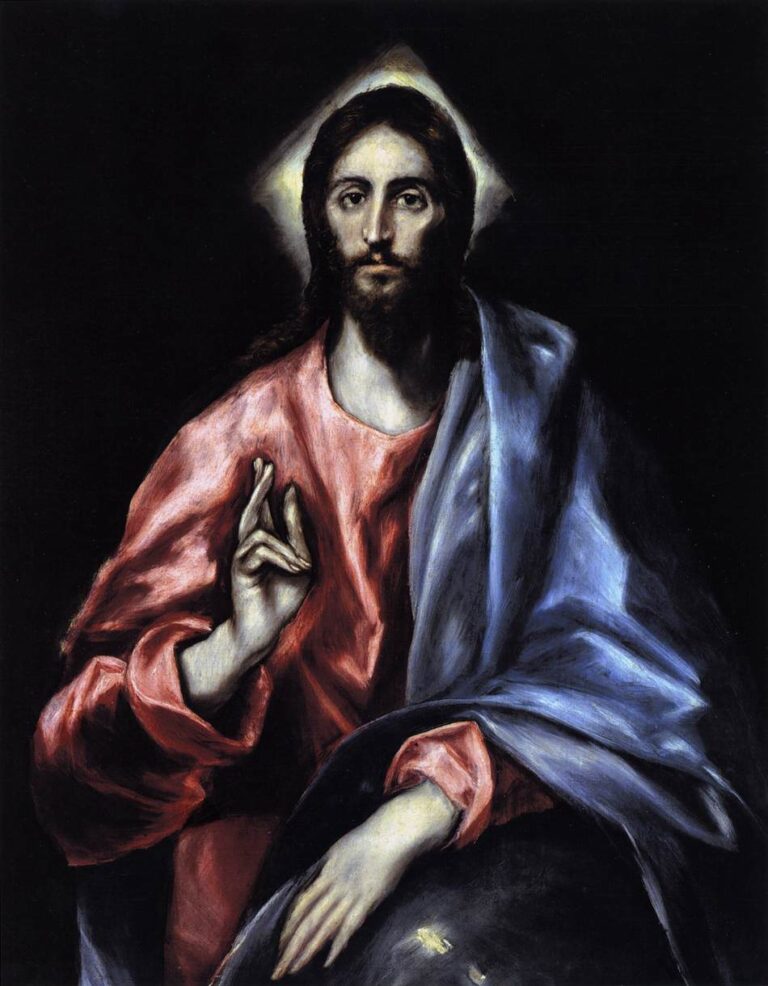El Greco
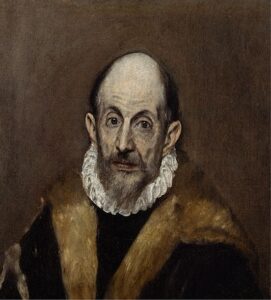
Doménikos Theotokópoulos, widely known as El Greco (“The Greek”), was a prominent painter, sculptor, and architect of the Spanish Renaissance. He was born on October 1, 1541, in Heraklion, Crete, which was then part of the Republic of Venice. Despite being Greek, he developed much of his career in Spain, more specifically in Toledo, where he is considered a major figure of the Spanish Renaissance.
El Greco initially studied Byzantine icon painting in his hometown, which provided him with a strong foundation in post-Byzantine art. He then moved to Venice around 1567, where he was profoundly influenced by the work of Titian and Tintoretto, thereby broadening his stylistic range. His time in Venice was followed by a brief period in Rome, from 1570 to 1577, where he experienced first-hand the works of Michelangelo and Raphael.
In 1577, El Greco relocated to Spain, settling in Toledo. This move marked a turning point in his career, as it was in Toledo that his unique style fully blossomed. El Greco’s works are known for their vibrant color, dramatic lighting, and often elongated, spiritual figures that imbue his paintings with a sense of mysticism. His art is considered a precursor to both Expressionism and Cubism, underscoring his lasting influence on the course of Western art history.
Some of El Greco’s most famous works include “The Burial of the Count of Orgaz” (1586–1588), “View of Toledo” (1599–1600), and “The Disrobing of Christ” (1577–1579). These works showcase his unique blend of Byzantine, Renaissance, and Mannerist influences, creating a style that is distinctly his own.
El Greco passed away on April 7, 1614, in Toledo. Despite falling out of favor in the centuries immediately following his death, his work was rediscovered in the late 19th and early 20th centuries and is now considered among the most influential of the Renaissance period. El Greco’s art continues to captivate audiences, not just for its technical brilliance but also for its profound spiritual depth and the questions it raises about the nature of representation in art.

